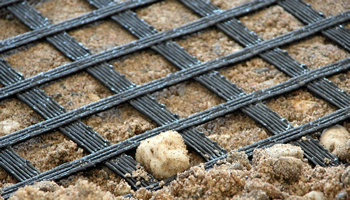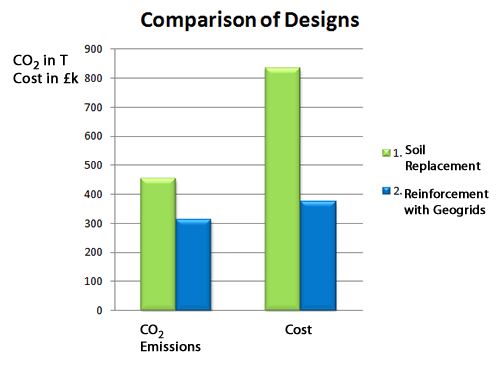 Irrespective of whether or not it is about building a house, acquiring a new car or choosing a new power supply company, sustainability is to an increasing extent a core selection criterion for consumers. Only if a house meets the latest requirements on insulation or even if it can be classified as a low energy house does it satisfy the aspirations of the modern householder. When making their decision to buy a new car, the following criteria play an increasingly important role. It should not only have as much power as possible, but it should also have low fuel consumption and create low CO2 emissions.
Irrespective of whether or not it is about building a house, acquiring a new car or choosing a new power supply company, sustainability is to an increasing extent a core selection criterion for consumers. Only if a house meets the latest requirements on insulation or even if it can be classified as a low energy house does it satisfy the aspirations of the modern householder. When making their decision to buy a new car, the following criteria play an increasingly important role. It should not only have as much power as possible, but it should also have low fuel consumption and create low CO2 emissions.
Things are beginning to look similar in the world of soil mechanics and foundation engineering. Here as well expressions such as environmental performance evaluation, CO2 emission and carbon footprint are increasingly coming into everyday use. Geosynthetics, which are becoming more and more established relative to traditional construction processes, take on a special role in this context. Not only because they are already established in the market and they represented the more economical alternative in many applications but also because they stand up to environmental performance evaluation. Geosynthetics often perform very much better by a long way than construction processes using cement and fine crushed limestone.1
At first glance, this does not appear to be rational since on closer scrutiny it appears that geogrids, for example, made of polypropylene, have higher CO2 emissions during manufacture, than, for example, cement, because of the raw materials used to make them. However, putting it into perspective, this is all relative as the amount of geogrid used is only a fraction of the amount of cement required to realise the same project.
A comparison of various construction processes using geosynthetics with traditional construction processes was commissioned by WRAP2. It was prepared by Capita Symonds and published in the WRAP Report3. In each case the CO2 emissions and the costs of the different construction processes were compared.
 |
Based on a project described in the report at the Commonhead Junction near Swindon, UK, both the CO2 emissions and the costs of the specific construction processes were calculated. The Swindon project is concerned with improving traffic flow at the A417/A419 roundabout, by building a dual two-lane overpass on an embankment.
To ensure the necessary slope angle for the ramps, the proposed process entailed replacing the available clay without reinforcement by granular fill. The use of geosynthetics meant that the existing clay could be used with geogrid reinforcement.
Figure 1 shows clearly that by using geosynthetics not only an environmentally friendly solution but also a cost-effective one could be chosen.
The calculation included all the construction processes for storing and removing the excavated material, the delivery of granular fill as well as the respective construction procedure. The same applies to the CO2 calculation.4
Based on this example it is evident that the use of geosynthetics in soil mechanics and foundation engineering is not only of great interest economically but it is also beneficial from the ecological viewpoint. In the present case the use of HUESKER Fortrac® 35/20-20 geogrid led to CO2 emissions being reduced by approximately 30% in comparison to traditional construction processes. Among other things, this was possible because soil already available on site did not have to be completely replaced. Furthermore, by choosing the geosynthetic solution a cost reduction of approximately 55% was achieved.
Especially by using HUESKER geosynthetics, the ecological benefits can be further improved. The environmentally friendly production process means that HUESKER is able to produce geogrid without generating dirty water or needing any cooling water. The modern production plants produce geosynthetics with very low use of resources. In addition the manufacturing process certified according to DIN EN ISO 14001:2009 is being continuously optimised. Furthermore, a sustainability report is being prepared in cooperation with the University of Duisburg-Essen, based on the Global Reporting Initiative (GRI) guidelines. The GRI is a globally active, independent multi-stakeholder initiative for development, promotion and circulation of reports on sustainable development of an organisation.
This report shows that HUESKER works mainly with European and German suppliers. This means that HUESKER manages to keep their transport-related CO2 emissions down to approximately only 1.6% of total emissions of the project.
Furthermore, the sustainability report confirms that by implementing various measures HUESKER is constantly working on reducing CO2 emissions. Compared with a car, HUESKER products are thus comparable to a vehicle with a green environmental sticker, providing high performance and at the same time being in pole position with regard to costs.
Learn more about geosynthetics and environmental protection at http://www.huesker.com.
REFERENCES
1 EGLOFFSTEIN, Th. (2009): Ökologischer Vergleich zwischen Bauweisen mit mineralischen Baustoffen und Bindemitteln sowie Bauweisen mit Geokunststoffen. Geotechnik 32 (2009) Nr. 3. VGE Verlag GmbH, Essen.
2WRAP (Waste & Resources Action Programme) works in England, Scotland, Wales and Northern Ireland to help businesses and individuals reap the benefit of reducing waste, develop sustainable products and use resources in an efficient way.
3WRAP — Geosystems Report, July 2009: “Sustainable Geosystems in Civil Engineering Applications”
4The cost comparison is based on data from the respective supplier and transport company. The CO2 calculation is based on the Inventory of Carbon & Energy Data Bank (Version 1.6a) of the University of Bath and the Carbon Trust.











